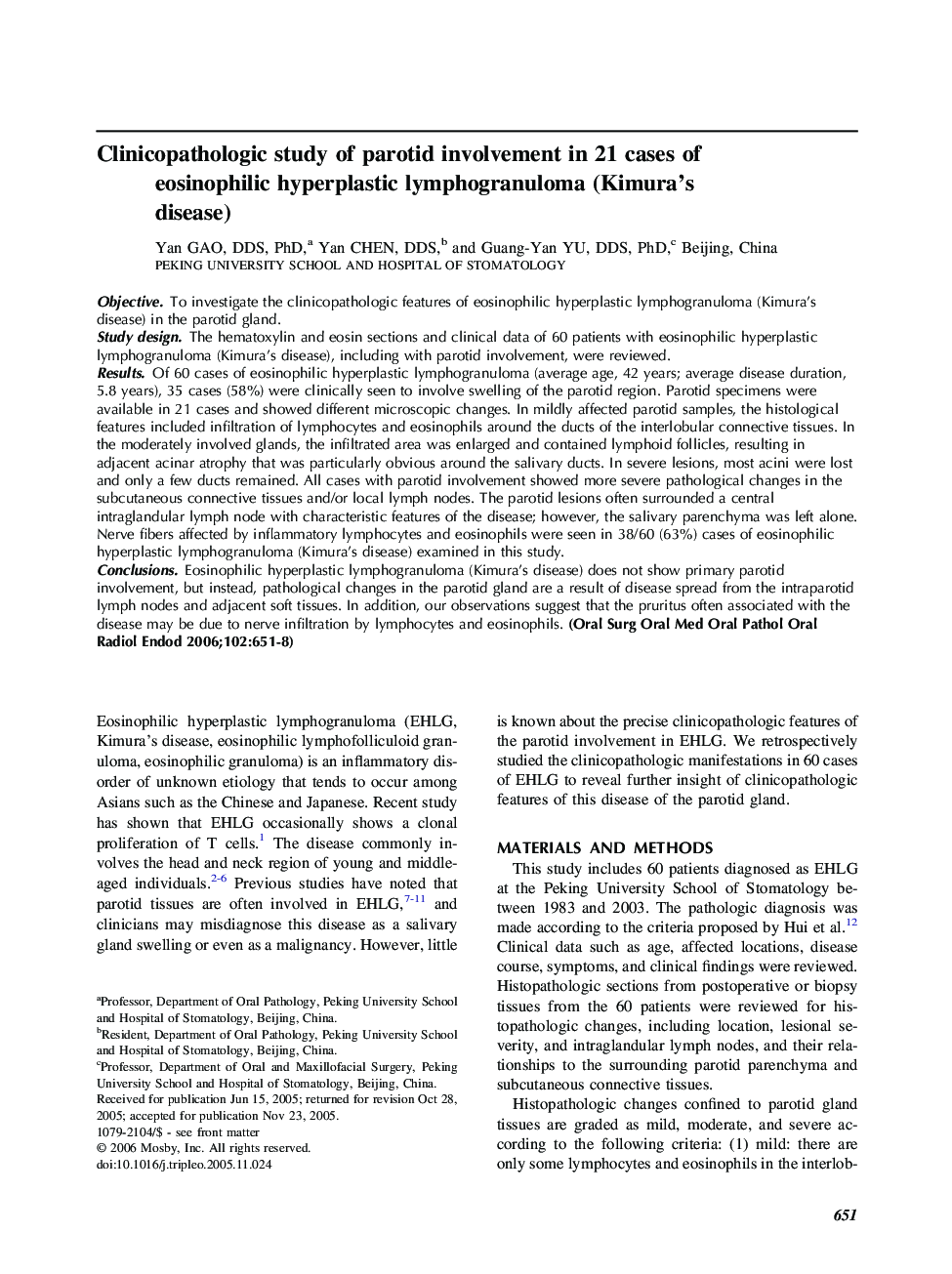| Article ID | Journal | Published Year | Pages | File Type |
|---|---|---|---|---|
| 3169815 | Oral Surgery, Oral Medicine, Oral Pathology, Oral Radiology, and Endodontology | 2006 | 8 Pages |
ObjectiveTo investigate the clinicopathologic features of eosinophilic hyperplastic lymphogranuloma (Kimura’s disease) in the parotid gland.Study designThe hematoxylin and eosin sections and clinical data of 60 patients with eosinophilic hyperplastic lymphogranuloma (Kimura’s disease), including with parotid involvement, were reviewed.ResultsOf 60 cases of eosinophilic hyperplastic lymphogranuloma (average age, 42 years; average disease duration, 5.8 years), 35 cases (58%) were clinically seen to involve swelling of the parotid region. Parotid specimens were available in 21 cases and showed different microscopic changes. In mildly affected parotid samples, the histological features included infiltration of lymphocytes and eosinophils around the ducts of the interlobular connective tissues. In the moderately involved glands, the infiltrated area was enlarged and contained lymphoid follicles, resulting in adjacent acinar atrophy that was particularly obvious around the salivary ducts. In severe lesions, most acini were lost and only a few ducts remained. All cases with parotid involvement showed more severe pathological changes in the subcutaneous connective tissues and/or local lymph nodes. The parotid lesions often surrounded a central intraglandular lymph node with characteristic features of the disease; however, the salivary parenchyma was left alone. Nerve fibers affected by inflammatory lymphocytes and eosinophils were seen in 38/60 (63%) cases of eosinophilic hyperplastic lymphogranuloma (Kimura’s disease) examined in this study.ConclusionsEosinophilic hyperplastic lymphogranuloma (Kimura’s disease) does not show primary parotid involvement, but instead, pathological changes in the parotid gland are a result of disease spread from the intraparotid lymph nodes and adjacent soft tissues. In addition, our observations suggest that the pruritus often associated with the disease may be due to nerve infiltration by lymphocytes and eosinophils.
